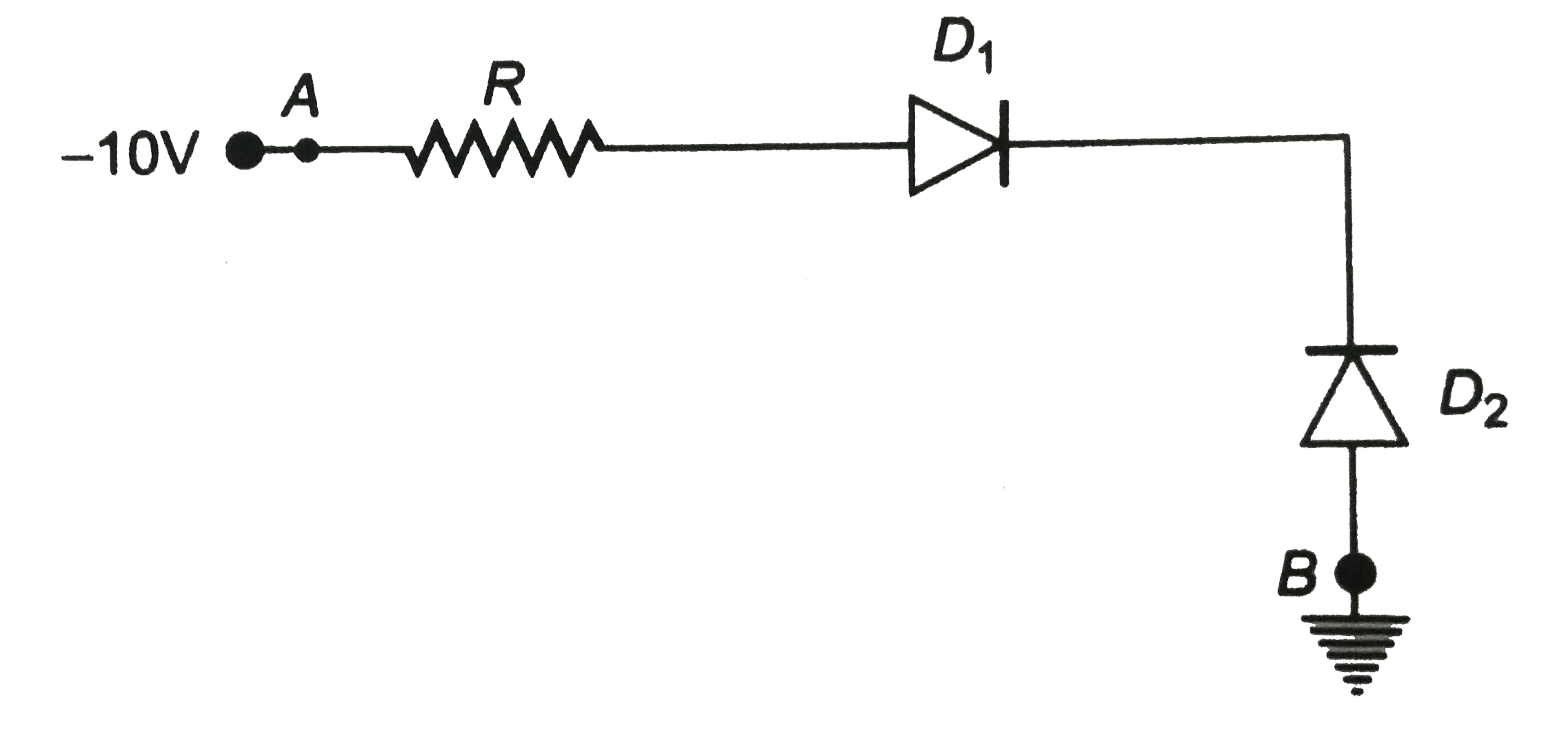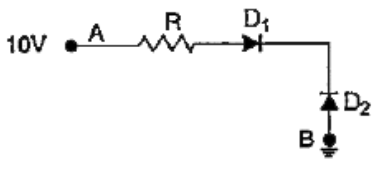In figure , assuming the diodes to be ideal ,

D1 is forward biased and D2 is reverse biased and hence current flows from A to B
D2 is forward biased and D1 is reverse biased and hence no current flows from B to A and vice versa
D1 and D2 are both forward biased and hence current flows form A to B
D1 and D2 are both revrese biased and hence no current flows from A and B and vica-versa.
The correct Answer is:B
In the given circuit p-side of p−n function D1 is connected to lower voltage and n-side of D1 to higher voltage. Thus D is reverse biased. The p-side of p−n junction D2 is lower potential.
Therefore D2 is forward biased.
Hence, current flows through the junction B to A.
Similar Questions
In Fig assuming the diodes to be ideal :

View SolutionAssuming that the junction diode is ideal , in the circuit shown here , the current through the diode is :
View SolutionIn figure, assuming the diodes to be ideal,
View SolutionIn figure , assuming the diodes to be ideal ,
View SolutionIn figure , assuming the diodes to be ideal ,
View SolutionIn figure , assuming the diodes to be ideal ,

View SolutionIn figure, assuming the diodes to be ideal,

View SolutionAssuming that the junction diode is ideal the current through the diode is
View Solution

